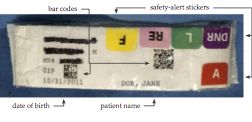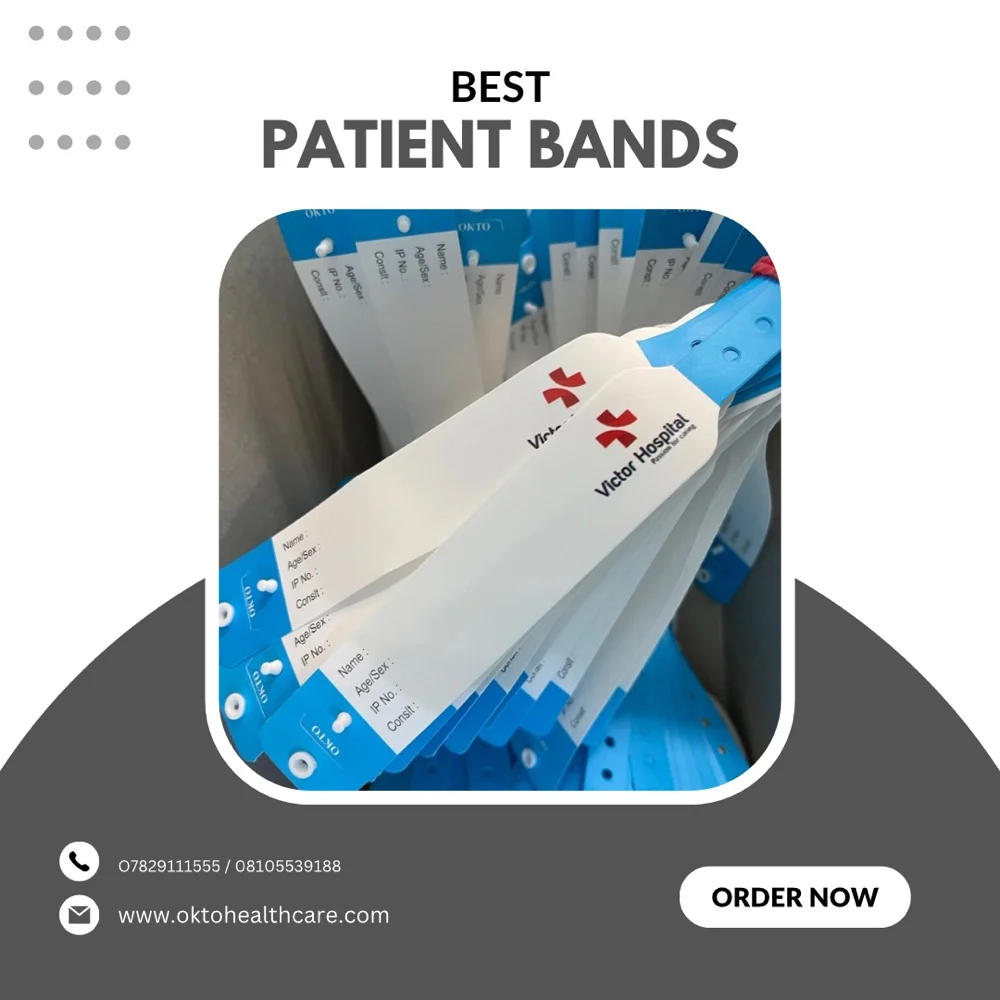Exactly How a Patient Identification Band Can Enhance Medical Facility Performance and Accuracy
Exactly How a Patient Identification Band Can Enhance Medical Facility Performance and Accuracy
Blog Article
Enhancing Safety: The Value of Patient Identification Bands in Medical Care
In the realm of medical care, the efficacy of patient identification bands can not be overstated, as they serve as a fundamental protect against misidentification and subsequent errors. As we discover the complex duty of these bands, it ends up being noticeable that their significance prolongs beyond plain recognition, increasing concerns about finest practices and future developments in patient safety and security.
Review of Individual Identification Bands
Patient recognition bands play a critical role in ensuring the safety and security and accuracy of client treatment in health care setups. These bands, normally used on the wrist or ankle joint, serve as a critical device for verifying person identification, thereby minimizing the threat of errors in treatment, medication management, and other medical care procedures. Made from resilient products, person identification bands often consist of important information such as the patient's name, day of birth, medical document number, and barcodes or QR codes for scanning.
The implementation of individual identification bands is essential in different healthcare atmospheres, consisting of healthcare facilities, outpatient facilities, and long-lasting treatment institutions. They add to a methodical approach in individual management, allowing medical care professionals to swiftly and properly determine people, especially in high-pressure circumstances where speedy decision-making is important.
Moreover, making use of these bands is straightened with governing criteria targeted at enhancing patient safety - Patient Identification Band. By guaranteeing that each patient's info is easily easily accessible and quickly verifiable, doctor can preserve a high standard of care, reduce the occurrence of damaging occasions, and foster a culture of safety within health care establishments
Advantages of Accurate Identification
Precise identification is basic to enhancing individual safety and care high quality in healthcare settings. It works as the initial line of protection against mistakes that can cause unfavorable patient results. By ensuring that each patient is correctly determined through trustworthy ways, such as patient recognition bands, health care companies can considerably minimize the danger of misidentification, which can lead to inappropriate therapies, medication mistakes, and even medical mix-ups.
Furthermore, exact individual identification promotes efficient interaction among medical care teams. When all personnel can continually recognize clients, they can share critical info much more successfully, resulting in far better coordination of treatment. This is particularly crucial in emergency situation circumstances where prompt interventions are crucial.
Furthermore, accurate recognition supports conformity with governing requirements, consequently reducing the danger of lawful repercussions for health care centers. It promotes trust fund between clients and doctor, as individuals really feel more safe recognizing that their identifications are being safeguarded.

Common Challenges Faced
Making certain efficient patient identification in medical care settings presents a variety of challenges that can endanger safety and care top quality. One significant obstacle is the irregularity in client populaces. Clients might arrive in a state of confusion or distress, making exact identification tough. Additionally, language obstacles can impede effective communication, making complex the confirmation process.
Another difficulty is the dependence on human factors in identification treatments. Medical care experts might inadvertently ignore or misunderstand recognition methods, particularly in high-stress settings such as emergency departments. This can cause mistakes, consisting of the management of wrong therapies or medications.
Technological concerns additionally posture challenges. Digital health and wellness document (EHR) systems are created to enhance individual recognition, system outages or user errors can disrupt the procedure. Furthermore, the physical design of person ID bands can bring about readability concerns, specifically in cases where bands are damaged or covered.
Finally, irregular training amongst staff relating to identification protocols can result in voids in understanding and method. Dealing with these challenges is crucial for enhancing visit here patient safety and security and making certain that identification bands serve their desired function effectively.
Best Practices for Execution
To successfully execute patient recognition bands in health care setups, organizations must take on a complex method that focuses on training, innovation, and standardization combination. Standardization entails establishing clear methods for the style, application, and use identification bands throughout all departments. This makes sure consistency and lessens the risk of errors connected to variances in band kinds or classifying techniques.


Training is necessary for all health care staff to guarantee they comprehend the importance of exact client recognition, exactly how to properly use and read recognition bands, and the procedures to adhere to in situation of discrepancies. Routine workshops and refresher programs can reinforce this expertise and advertise a culture of security.
Technology combination plays a pivotal duty in improving the effectiveness of individual identification bands. Using barcode scanning or RFID modern technology can improve the recognition process, enabling real-time verification of client identities. In addition, electronic health and wellness document systems ought to be set up to consist of notifies for inequalities in between the identification band and client data.
Future Trends in Individual Safety And Security
As healthcare remains to progress, the focus on client security is most likely to magnify, driven by improvements in modern technology and a better understanding of systemic risks. Arising fads show a shift towards more integrated systems that take advantage of information analytics, expert system, and artificial intelligence to boost person recognition procedures. These technologies can help identify prospective security problems before they escalate, thus minimizing mistakes related to misidentification.
Additionally, the execution of blockchain modern technology might change just how patient information is securely shared among doctor, making certain that recognition bands are updated and regularly accurate. This will not just boost person safety and security but additionally promote smooth communication across multidisciplinary groups.

In enhancement, the expanding focus on customized medicine is anticipated to affect person safety protocols. By integrating go now genetic and group details into identification systems, healthcare professionals can tailor treatments a lot more successfully, decreasing the threats of negative responses because of Our site misidentification.
Verdict
Finally, person recognition bands act as an essential part in boosting safety and security within medical care settings. By promoting accurate client identification, these bands considerably reduce the risk of mistakes related to misidentification, unacceptable therapies, and medicine administration. Regardless of obstacles in application, adherence to best methods and the combination of emerging technologies can further improve their performance. Eventually, the continued focus on durable identification protocols will certainly add to enhanced patient end results and general safety in healthcare setups.
In the world of health care, the efficiency of individual recognition bands can not be overstated, as they offer as an essential safeguard versus misidentification and succeeding errors.Person identification bands play an essential duty in guaranteeing the safety and security and accuracy of patient treatment in healthcare settings. Made from sturdy materials, individual identification bands typically consist of important details such as the patient's name, date of birth, clinical document number, and barcodes or QR codes for scanning.
By ensuring that each client is appropriately determined via dependable ways, such as person identification bands, health care carriers can considerably lessen the threat of misidentification, which can lead to inappropriate treatments, medicine mistakes, and even medical mix-ups.
In verdict, patient identification bands serve as a crucial part in enhancing safety within medical care environments. Patient Identification Band.
Report this page